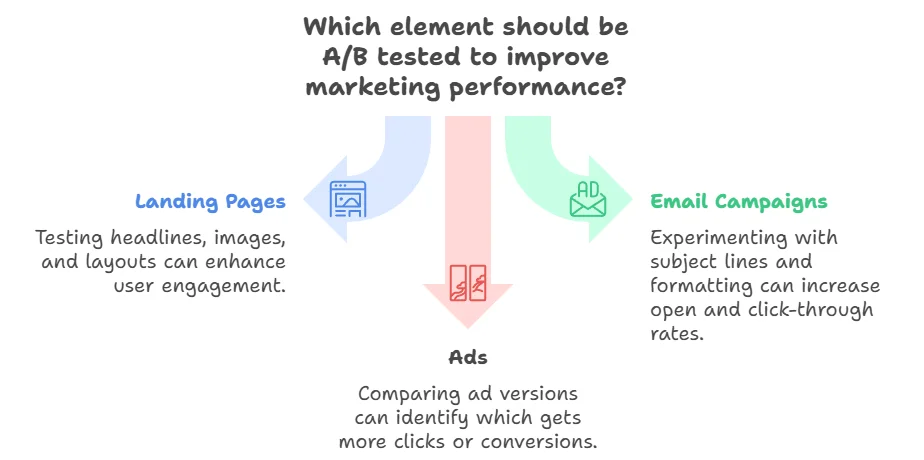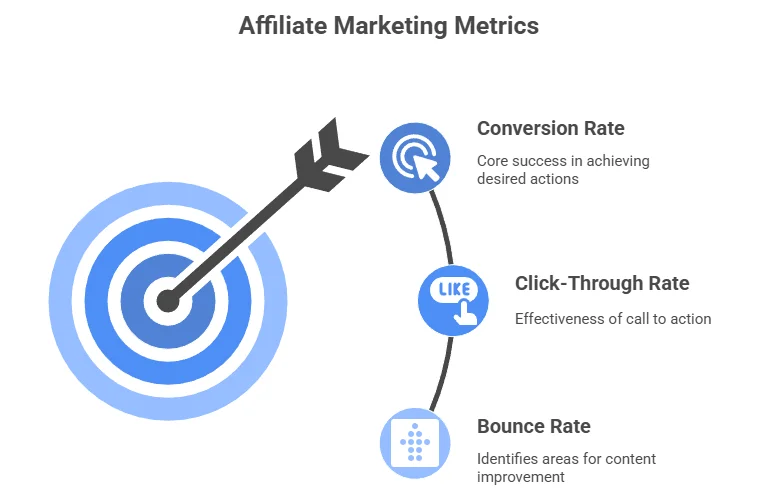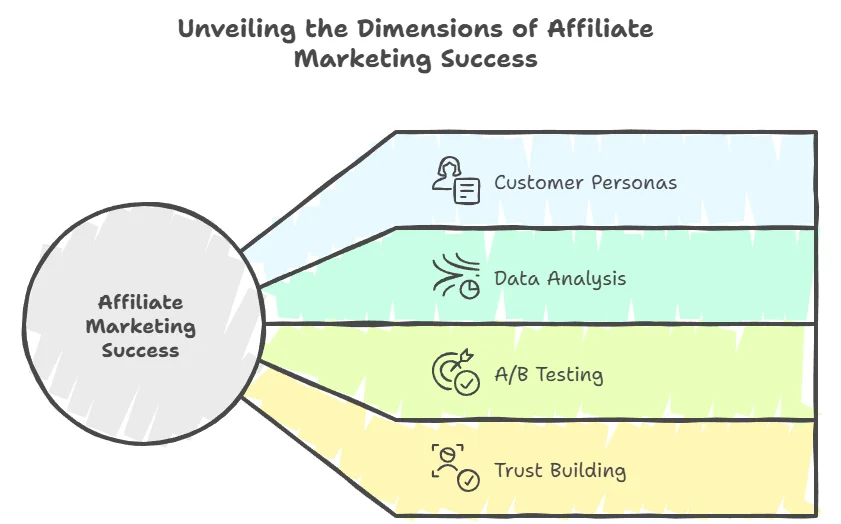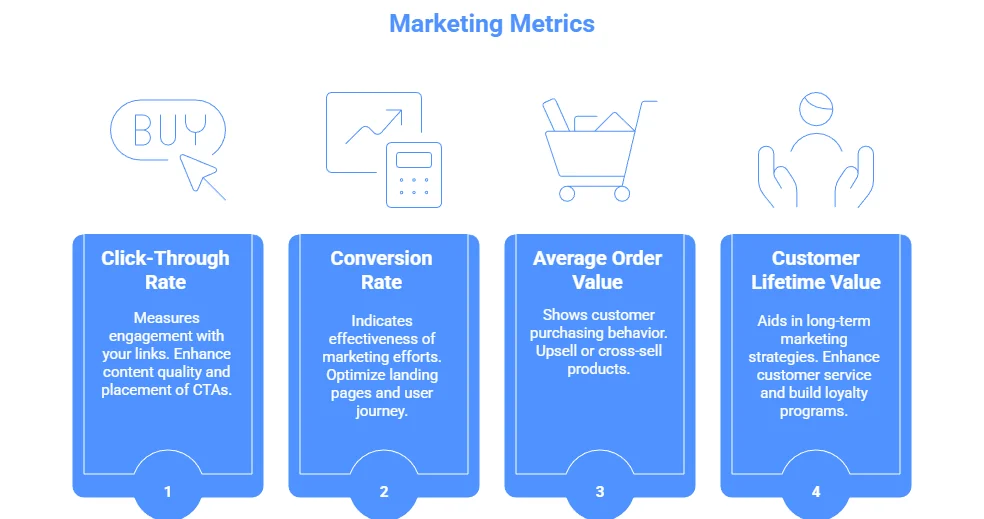
A well-structured affiliate marketing strategy can dramatically boost your income. However, driving traffic to your affiliate links is only part of the equation. You need effective Affiliate Conversion Optimization techniques to turn that traffic into sales. Here are some strategies to help you enhance your conversion rates and maximize profits.
Understand Your Audience
Knowing your audience is the foundation of any successful marketing strategy. Consider the following:
- Demographics: Age, gender, and location influence purchasing behaviors.
- Interests: What are they passionate about? Tailor your approach accordingly.
- Pain points: Understanding what problems your audience faces allows you to offer solutions more effectively.
By comprehensively understanding your audience, you can craft personalized content that resonates and drives conversions.
Optimize Your Affiliate Links
Your affiliate links should be user-friendly and appealing. Here are some tips:
- Shorten Links: Use a link shortener for cleaner URLs that look trustworthy.
- Incorporate Links Naturally: Integrate affiliate links seamlessly into your content instead of forcing them.
- Clear Call-to-Actions (CTAs): Use strong, action-oriented phrases that encourage clicks.
Create Valuable Content
Content is king in affiliate marketing. Here’s how to create engaging content that encourages conversions:
- Educational Content: Share tutorials, guides, and how-to articles that showcase your product.
- Reviews and Comparisons: Offer honest product reviews or compare products to allow informed decision-making.
- Visuals Matter: Use images and videos to enhance your content. Engaging media can significantly entail customer interest.
Leverage Email Marketing
Email newsletters are excellent tools for Affiliate Conversion Optimization. Consider these strategies:
- Segment Your List: Tailor your messages based on subscriber interests and behaviors.
- Include Exclusive Offers: Share exclusive discounts or special deals with your subscribers.
- Automate Your Campaigns: Set up automated email sequences to nurture leads over time.
By consistently reaching out and providing value through email, you can enhance your affiliate conversions over time.
Test and Analyze Your Strategies
Ongoing testing and analysis are crucial for optimizing your affiliate marketing efforts. Here are key actions to consider:
- A/B Testing: Test different versions of your content to see which performs better.
- Analyze Click-Through Rates (CTR): Regularly track how many clicks your affiliate links receive.
- Monitor Your Conversions: Keep an eye on your conversion data to identify patterns and areas for improvement.
Utilize Social Proof
Social proof can significantly influence purchasing decisions. Here are a few ways to incorporate it:
- Testimonials: Share positive feedback from customers who have used the products.
- User-Generated Content: Encourage buyers to share their experiences on social media.
- Ratings and Reviews: Display ratings and reviews prominently on your site to enhance credibility.
Build Trust with Authenticity
Trust is paramount in affiliate marketing. Ensure you:
- Be Honest: Only promote products you genuinely believe in.
- Disclose Relationships: Always disclose your affiliate relationships to maintain transparency with your audience.
These strategies are just stepping stones to mastering Affiliate Conversion Optimization. For further learning, explore resources like Digital Marketer, Neil Patel, and OptinMonster. Remember, consistently optimizing your strategies will lead you to greater success in the affiliate marketing realm!
The Role of A/B Testing in Boosting Affiliate Sales

Affiliate marketing has grown significantly, and marketers constantly seek new ways to boost their sales. One key strategy in achieving this is A/B testing. This method allows marketers to compare two versions of a webpage, email, or ad to see which performs better. With A/B testing, you can make data-informed decisions that lead to higher conversions and improved sales funnels.
Understanding the fundamentals of A/B testing is crucial to grasping its role in Affiliate Conversion Optimization. The concept revolves around creating two variants of an element—let’s say a call-to-action (CTA). One would be the control (A), while the other is the variation (B). You then present these two versions to different segments of your audience to gauge which one resonates more.
Why is this so vital? In affiliate marketing, small changes can have significant impacts. A/B testing helps identify what works and what doesn’t, enabling you to make necessary adjustments. Here are some areas where A/B testing can enhance your affiliate sales:
- Landing Pages: Test different headlines, images, and layouts to see what captures users’ attention.
- Email Campaigns: Experiment with subject lines and formatting to boost open and click-through rates.
- Ads: Compare ad versions to find out which gets more clicks or conversions.
Many affiliate marketers underestimate the importance of the details. However, even minor tweaks, such as changing a word or color scheme, can yield significant results. For example, using power words in your CTA can increase urgency, prompting users to act sooner.
One area where A/B testing shines is in optimizing your affiliate links. Here’s how:
- Link Placement: Test different placements for affiliate links within your content to find the most effective locations for visibility and clicks.
- Link Text: Experiment with various phrases for your affiliate links; “Buy Now” vs. “Get Yours Today” can evoke different responses.
- Visual Elements: Use buttons vs. plain text for links to compare user engagement.
Data analytics plays a significant role in A/B testing. Platforms like Optimizely and Google Analytics provide powerful tools to track the performance of your campaigns. These analytics tools help visualize which version is more appealing and understand user behavior on your site.
Moreover, you need to remember the importance of sample size and duration. Running A/B tests for a short period, or with too small a sample, may lead to inconclusive results. A robust test requires sufficient traffic to ensure that your findings are statistically significant. It helps to establish clear metrics to evaluate your results accurately.
The ultimate goal of A/B testing is to improve conversion rates, and tracking these metrics is vital. Consider monitoring:
| Metric | Description | Importance |
|---|---|---|
| Click-Through Rate | The percentage of users who click your affiliate link. | Indicates the effectiveness of your CTA. |
| Conversion Rate | The percentage of users who complete the desired action. | Shows the overall success of your campaign. |
| Bounce Rate | The percentage of visitors who leave your site after viewing only one page. | Helps identify content that may need improvement. |

By adopting A/B testing, you can enhance your affiliate marketing strategies organically, building sustainable revenue streams. You will not only learn more about your audience but also refine your marketing tactics over time. As you implement A/B testing, stay patient and consistent. Results can take time, but the potential for improved affiliate conversions makes it worth the effort.
For more in-depth insights on A/B testing and affiliate marketing, you can explore resources from Crazy Egg and Neil Patel’s blog. They provide a wealth of information that can help you take your affiliate marketing efforts to the next level.
Understanding Your Audience to Increase Conversion Rates
When you want to boost your Affiliate Conversion Optimization rates, understanding your audience is key. Knowing what potential customers want and how they behave can be the difference between a sale and a missed opportunity. To truly connect with your audience, you must dive deep into their preferences, needs, and pain points. This understanding will allow you to craft more compelling offers and messaging.
A great starting point is creating detailed customer personas. These personas should encompass demographic information such as age, gender, location, and income level. But don’t stop there; dig into their interests, hobbies, and online behaviors. This rich data can help you predict their purchasing decisions and tailor your marketing strategies accordingly. Here’s what to consider when crafting customer personas:
- Demographics: Age, Gender, Income
- Interests: Hobbies, activities they enjoy
- Pain Points: Challenges they face that your products can solve
- Online Behavior: Which platforms they use, the type of content they consume
Once you have well-defined customer personas, use them to guide your content strategy. By focusing on the interests and needs of each persona, you can create personalized content that resonates. Personalized content not only engages your audience but also encourages them to take action, improving your conversion rates. For example, if you know your audience is highly interested in sustainability, you can highlight eco-friendly products in your affiliate offerings.
The next step is to analyze data from your existing audience. Use tools like Google Analytics, social media insights, or email marketing metrics to gather data on how users interact with your content. Pay attention to:
- Traffic Sources: Where visitors are coming from
- Engagement Metrics: Time spent on the page, bounce rate, etc.
- Conversion Rates: Which campaigns yield the highest conversions
This data provides a window into what works and what doesn’t. For instance, if you notice that blog posts about a certain niche consistently result in higher conversion rates, you might decide to produce more content in that area.
A/B testing is another powerful method you can use to increase conversion rates. Try different versions of your landing pages, email campaigns, or social media posts to see which one performs better. You might test things like:
- Headlines: Which phrases grab attention?
- Call-to-Action (CTA): What wording compels the action?
- Design Elements: Does a different layout engage more effectively?
Keep in mind that the only way to know what resonates with your audience is to test and iterate. Each test can provide new data that refines your understanding of what drives conversions.
Don’t neglect the importance of building trust with your audience. Authenticity is crucial in affiliate marketing. Engage with your audience through social media or comment sections, listen to their feedback, and genuinely respond. Users are more likely to convert if they feel a connection to your brand. Adding customer testimonials or case studies to your pages can further boost credibility and inspire potential customers to follow through with a purchase.
As you strategize, remember to analyze the competitive landscape. Research what your competitors are doing effectively. Tools like SimilarWeb can provide insight into competitors’ traffic sources and popular content. This information can help you identify gaps in your strategy and give you fresh ideas to attract your audience.
By truly understanding your audience, you set the stage for increased affiliate conversion rates. It begins with knowledgeable personas, followed by data analysis, A/B testing, and trust-building. The more you tailor your approach to the specific needs and behaviors of your audience, the more likely you are to see a boost in conversions.
| Aspect | Importance |
|---|---|
| Customer Personas | Helps tailor content and offerings |
| Data Analysis | Informs effective strategies |
| A/B Testing | Optimizes landing pages and campaigns |
| Trust Building | Encourages conversions |

Implement these strategies thoughtfully, and you’ll not only enhance your understanding of your audience but also improve your Affiliate Conversion Optimization efforts.
Leveraging Content Marketing for Enhanced Affiliate Relationships
In today’s fast-paced digital landscape, content marketing plays a crucial role in shaping affiliate relationships. When you leverage the power of engaging content, you can nurture these relationships for better results. Understanding how to effectively use content to promote affiliate products is key to maximizing your conversion rates.
Content is more than just filling a webpage; it’s a powerful tool to engage your audience and drive conversions. High-quality, relevant content can communicate your brand’s message and build trust with your audience. Here are some essential strategies you can implement.
Target Audience Understanding
The first step in leveraging content marketing effectively is understanding your target audience. This means identifying their needs, preferences, and challenges. When you know what your audience is looking for, you can create content that meets those needs.
- Conduct surveys or polls to gather information directly from your audience.
- Analyze social media interactions to see what topics resonate most.
- Utilize tools like Google Analytics to track user behavior on your site.
Creating Valuable Content
Your content must provide value to your readers. Content that educates, entertains, or informs is more likely to be shared and linked to, resulting in better affiliate performance. Here’s how to create valuable content:
- Utilize how-to guides and tutorials. These are perfect for affiliate products that solve specific problems.
- Write product reviews that give insights into the pros and cons of items you are promoting.
- Share case studies and success stories from users of the affiliate products.
SEO Optimization for Affiliate Links
Optimizing your content for search engines is essential for driving organic traffic. Use relevant keywords throughout your content and in your affiliate links to ensure they reach the right audience.
- Incorporate primary and long-tail keywords naturally within the content.
- Use keyword tools to find suitable phrases that potential customers are searching for.
- Ensure your website is mobile-friendly, as this affects search rankings.
Engaging Visuals
Visual content can enhance user engagement significantly. Include high-quality images, graphics, and videos relevant to your affiliate products. This captures attention and encourages viewers to keep scrolling or clicking. You might use visuals in the following ways:
- Create infographics that summarize essential information about a product.
- Embed videos demonstrating the product in use.
- Use images that highlight the product’s features effectively.
Building Trust Through Authenticity
To foster strong affiliate relationships, authenticity is essential. Transparency about your affiliate partnerships creates trust. Here’s how to communicate authenticity:
- Disclose affiliate links clearly in your content.
- Share personal experiences with the products you promote.
- Encourage honest feedback from your audience about their experiences with the products.
Utilizing Social Media
Social media platforms are excellent avenues for promoting affiliate content. Engage with your audience on social networks by sharing your content and encouraging discussions around it.
- Post snippets of your content with links back to your site.
- Utilize stories and live videos to connect with your audience in real time.
- Run polls or ask questions to generate conversation around the products you promote.
Monitoring and Analyzing Performance
Continuous improvement is vital in any marketing strategy. Use analytics tools to monitor how your content is performing regarding affiliate conversions.
Implementing these strategies will help you create a solid foundation for Affiliate Conversion Optimization through content marketing. By understanding your audience, creating valuable content, building trust, and analyzing performance, you can develop enhanced affiliate relationships that drive conversions and boost your revenue.
Analyzing Affiliate Metrics for Continuous Improvement
In the dynamic world of affiliate marketing, measuring the right metrics is vital for achieving success. If you want to enhance your strategies effectively, it’s imperative to analyze your affiliate metrics regularly. Understanding these metrics can identify strengths, weaknesses, and opportunities for continuous improvement.
To begin, focus on tracking key metrics that offer valuable insights. Here are some critical metrics to consider:
- Click-Through Rate (CTR): This metric shows the percentage of visitors who click on your affiliate links. A low CTR may signal that your content isn’t engaging, while a higher rate indicates strong interest.
- Conversion Rate: This is the percentage of visitors who complete a desired action, such as making a purchase. Monitoring this allows you to assess how effective your marketing strategies are.
- Average Order Value (AOV): Knowing how much customers typically spend when they shop helps in understanding customer behavior and maximizing revenue.
- Commission Rate: Understanding how much commission you earn per sale is vital. Higher rates mean more profits, so consider promoting higher-paying offers.
- Customer Lifetime Value (CLV): This metric estimates the total revenue a customer will generate during their relationship with your business. Knowing your CLV helps in strategizing long-term marketing efforts.
Once you’ve established which metrics to track, how do you go about analyzing them? Set up a systematic schedule for reviewing your metrics. For instance, a monthly review allows you to quickly identify trends and make adjustments. During these reviews, ask yourself:
- Which campaigns are performing better and why?
- Are there specific products or services that generate more sales?
- Have you noticed any patterns in customer behavior?
For deeper analysis, consider using tools like Google Analytics, SEMrush, or Clicky. These platforms can help you track your metrics effectively. You’ll gain functionalities to break down data in various ways, enabling more informed decisions.
Another critical aspect of improvement lies in experimenting with your content. Use A/B testing to see what messaging resonates more with your audience. By tweaking your call-to-action, headlines, or images, you can gauge the impact on your conversion rates.
Don’t underestimate the importance of audience feedback. Engage with your audience through emails or social media, collecting their insights about your products and content. This direct input can guide your adjustments.
| Metric | Importance | How to Improve |
|---|---|---|
| Click-Through Rate (CTR) | Measures engagement with your links. | Enhance content quality and placement of CTAs. |
| Conversion Rate | Indicates effectiveness of marketing efforts. | Optimize landing pages and user journey. |
| Average Order Value (AOV) | Shows customer purchasing behavior. | Upsell or cross-sell products. |
| Customer Lifetime Value (CLV) | Aids in long-term marketing strategies. | Enhance customer service and build loyalty programs. |

Moreover, keep an eye on external factors that might affect your metrics, such as market trends or seasonal changes. This broader perspective can enable you to forecast changes and adapt your strategies accordingly.
Continuous improvement in affiliate marketing hinges on being adaptable. Once you have evaluated your metrics and initiated improvements based on your findings, keep testing and measuring the results. The marketing landscape is always evolving, and your strategies should evolve alongside these changes. Don’t be afraid to pivot in response to data.
Remember, the ultimate goal of analyzing your affiliate metrics is not just to increase numbers. It’s about creating meaningful connections with your audience and delivering value. By adhering to consistent monitoring and seeking continuous improvement, your affiliate marketing efforts will thrive, leading to sustained success.
Conclusion
Optimizing affiliate conversions is essential for success in the competitive online marketplace. By employing effective strategies such as targeted content marketing and understanding your audience, you create a more inviting environment for potential customers. Delving deep into A/B testing can reveal valuable insights that enable you to tailor your offerings precisely to what your audience seeks. This kind of experimentation not only helps you refine your approach but can lead to a noticeable uplift in affiliate sales.
Furthermore, nurturing your affiliate relationships through quality content is paramount. Engaging and informative content not only attracts readers but also builds trust, which is crucial for conversions. Maintaining a close eye on your affiliate metrics ensures that you’re on the right track, providing a roadmap for continuous improvement. By analyzing data, you gain insights that inform future strategies and empower you to make data-driven decisions.
The journey of Affiliate Conversion Optimization is ongoing. It requires consistent effort, experimentation, and a keen understanding of your audience’s needs. With these tools and insights at your disposal, you’ll be well on your way to not only enhancing your affiliate sales but also establishing a loyal customer base. Embrace the process, be patient, and watch as your efforts result in increased conversions and lasting relationships in the affiliate landscape.